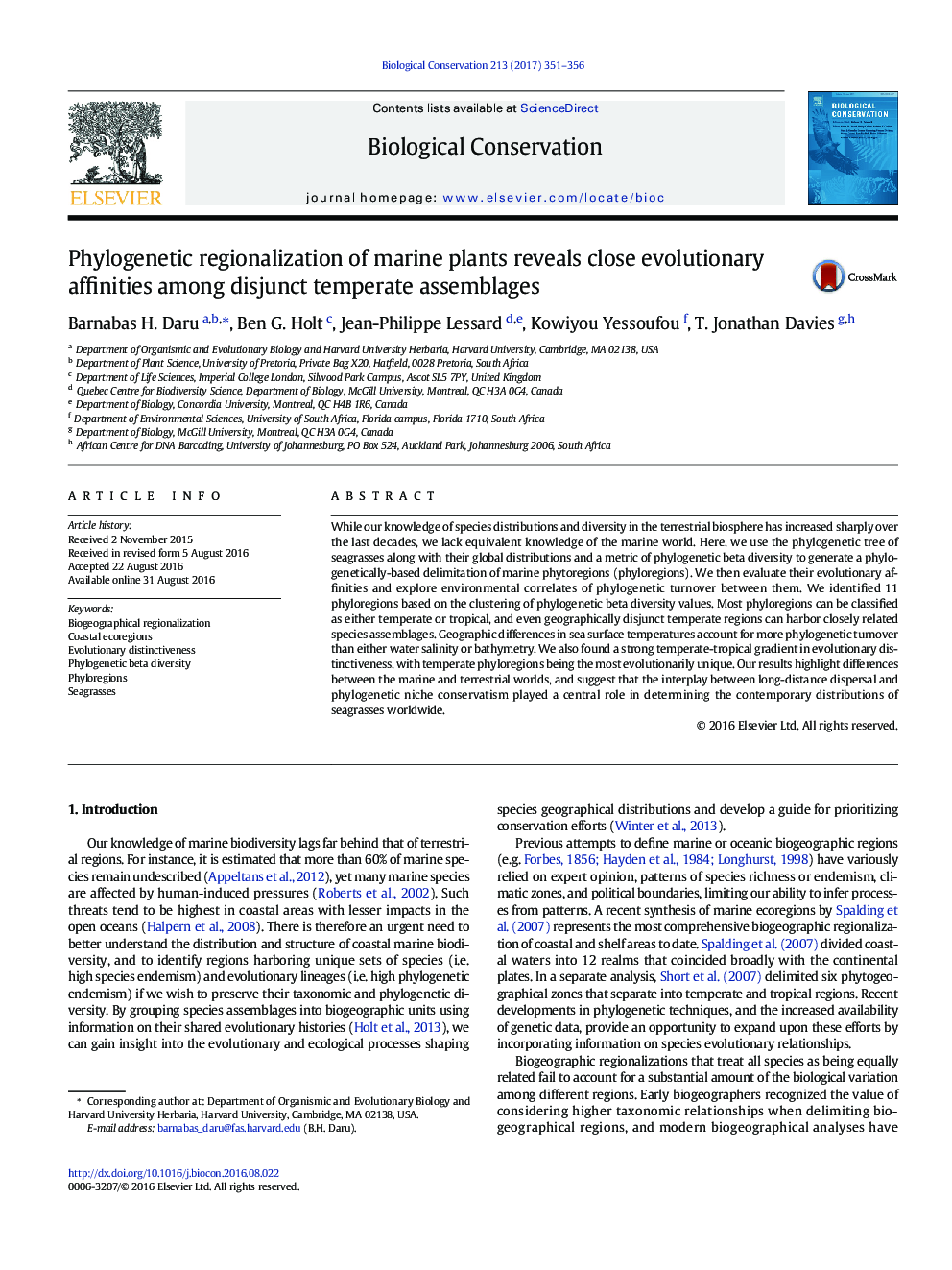| Article ID | Journal | Published Year | Pages | File Type |
|---|---|---|---|---|
| 5743058 | Biological Conservation | 2017 | 6 Pages |
â¢A first quantitative regionalization of coastal phytoregions using a phylogenetic approach is presented.â¢We found more evolutionarily distinct seagrass assemblages restricted to temperate regions than the tropics.â¢The findings provide strong support for temperate niche conservatism.
While our knowledge of species distributions and diversity in the terrestrial biosphere has increased sharply over the last decades, we lack equivalent knowledge of the marine world. Here, we use the phylogenetic tree of seagrasses along with their global distributions and a metric of phylogenetic beta diversity to generate a phylogenetically-based delimitation of marine phytoregions (phyloregions). We then evaluate their evolutionary affinities and explore environmental correlates of phylogenetic turnover between them. We identified 11 phyloregions based on the clustering of phylogenetic beta diversity values. Most phyloregions can be classified as either temperate or tropical, and even geographically disjunct temperate regions can harbor closely related species assemblages. Geographic differences in sea surface temperatures account for more phylogenetic turnover than either water salinity or bathymetry. We also found a strong temperate-tropical gradient in evolutionary distinctiveness, with temperate phyloregions being the most evolutionarily unique. Our results highlight differences between the marine and terrestrial worlds, and suggest that the interplay between long-distance dispersal and phylogenetic niche conservatism played a central role in determining the contemporary distributions of seagrasses worldwide.
